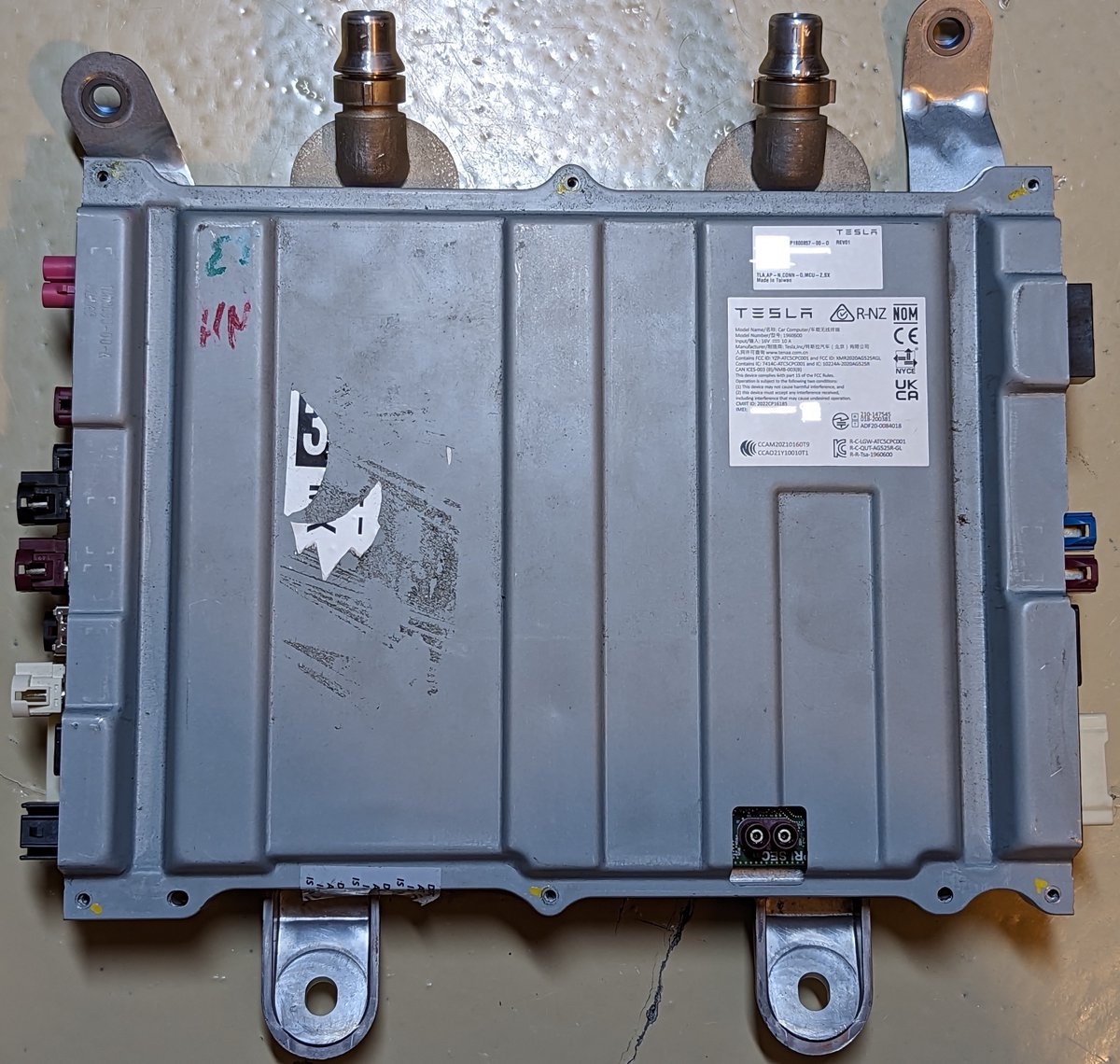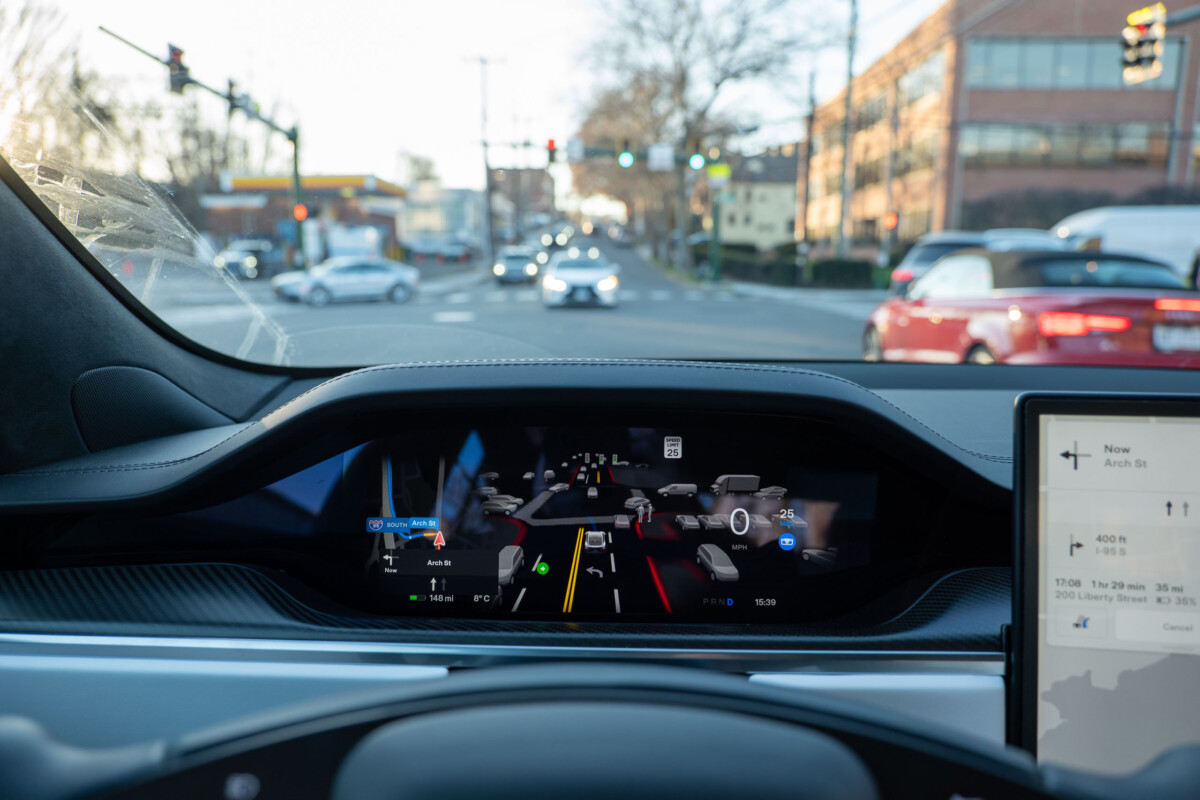They were eagerly awaited in the electric car world, and although it is not official, the technical characteristics of Tesla’s Hardware 4 have just been leaked. Let’s take stock of the new features, which will probably not please those who have just taken delivery of their Tesla, whether it is a Model 3, Model Y, Model S or Model X.
Tesla periodically offers a hardware update to its suite of sensors and the driving computer. Currently, we are on the third iteration, simply named “Hardware 3” or HW3. The persistent rumors about the Hardware 4 (HW4) seem to have been right about its imminent release, since the details have just been revealed. Let’s do a check in.
A major update: 360 degree view and 11 cameras
We had already mentioned the few features that are sorely lacking on a Tesla and which will probably never arrive, but it is clear that one will arrive more quickly than we anticipated: 360 degree view. And it seems that this update will arrive very soon on the Tesla Model 3, since the Shanghai production lines are said to be preparing the hardware update.

Indeed, according to GreenTheOnly, a well-known Tesla activist, no less than 11 cameras will be part of the new suite of sensors for Hardware 4and they would be distributed as follows:
- An indoor camera (as currently);
- Two cameras at the level of the front windshield (compared to three currently);
- Two door cameras (as on current models);
- Three cameras on the front bumper (instead of the two front fender cameras);
- Three cameras on the rear bumper.
Currently, no camera is present at the level of the front bumper – and this is moreover a problem in the absence of ultrasonic sensors -, and only one camera is located in the center of the rear bumper, above above the license plate.
The details revealed about the material accessed by GreenTheOnly are unequivocal: there will indeed be more cameras than today. We feared that this would not be the case, in particular because of the fact that the cameras in the windshield were reduced from three to two units, but it is clear that Tesla had anticipated this.
With three cameras in the front bumper, the need for an additional camera at the level of the windshield is probably superfluous.

Compared to current Teslas, two cameras are added (going from 9 to 11 cameras), and two cameras are therefore moved: these are those on the front fenders, in front of the side mirrors.
The latter are moved to the bumper, which explains the coarse camouflage fitted to the Tesla Model 3 “Highland” which was recently spotted. The same configuration is found on the rear bumper, ensuring a 360 degree view that was no longer expected.
Positioning the cameras in the front bumper will allow Dramatically improve FSD autonomous driving when it arrives in Europe. Currently, the car has a kind of blind spot in some intersections, due to the lack of cameras on the front part of the car.
No retrofit possible for old Teslas that become obsolete
If you have just taken delivery of your Tesla Model X Plaid at more than 140,000 euros, you are probably not going to appreciate what will follow. Indeed, your luxury electric SUV will not stay at the cutting edge of technology for very long.
In fact, the Tesla Model Xs that are currently produced would already be equipped with Hardware 4but Elon Musk’s firm would not deliver them to customers yet.

It is likely that all of this will be formalized during Tesla Investor Day on March 1, in less than two weeks. Still according to GreenTheOnly, the differences in the positioning of the connectors and the size of the components mean that it will not be possible to equip current cars with Hardware 4unlike the move from Hardware 2.5 to Hardware 3.
Among the less significant changes, however, we highlight the integration of the GPU into the motherboard, and the passage from 12 to 20 cores for the CPU (processor) in order to have more computing power for driving aids. Finally, the overall architecture seems to be designed around redundancy, since everything is symmetrical in terms of layout. Is this finally what Tesla needed to ensure true Level 5 autonomous driving? Only the future will tell us.
To follow us, we invite you to download our Android and iOS app. You can read our articles, files, and watch our latest YouTube videos.
